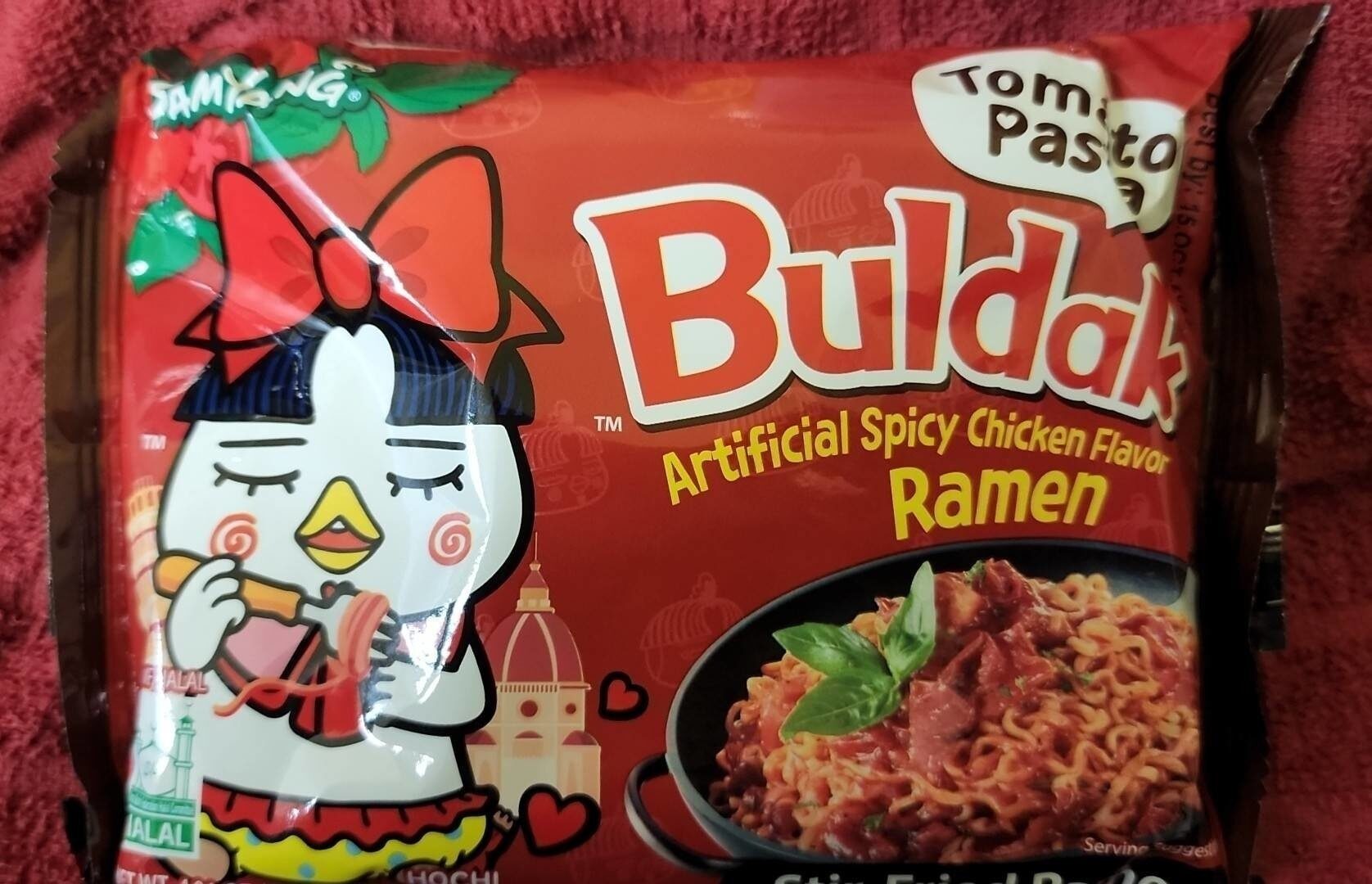Tomato Pasta Buldak Artificial Spicy Chicken Flavor Ramen - Samyang - 140 g
This product page is not complete. You can help to complete it by editing it and adding more data from the photos we have, or by taking more photos using the app for Android or iPhone/iPad. Thank you!
×
Barcode: 8801073114685 (EAN / EAN-13)
Quantity: 140 g
Brands: Samyang
Categories: Plant-based foods and beverages, Plant-based foods, Cereals and potatoes, Cereals and their products, Pastas, Noodles
Labels, certifications, awards:
Halal, HACCP
Stores: Tain Kim Heng
Matching with your preferences
Report a problem
Data sources
Product added on by kiliweb
Last edit of product page on by kiliweb.
Product page also edited by inf, odinh, rochus, yuka.sY2b0xO6T85zoF3NwEKvlhYYesfEjynGCUDtnEGt99zeFpPSP4BOuKjiM6s, yuka.sY2b0xO6T85zoF3NwEKvlkdsWoXCgR_UZgzUnnzR5POBfpPUUPZXxYr5HKs, yuka.sY2b0xO6T85zoF3NwEKvlmNmcvff823BaAfVhRyVwc7WF5bzTI52zqTzbqs.












